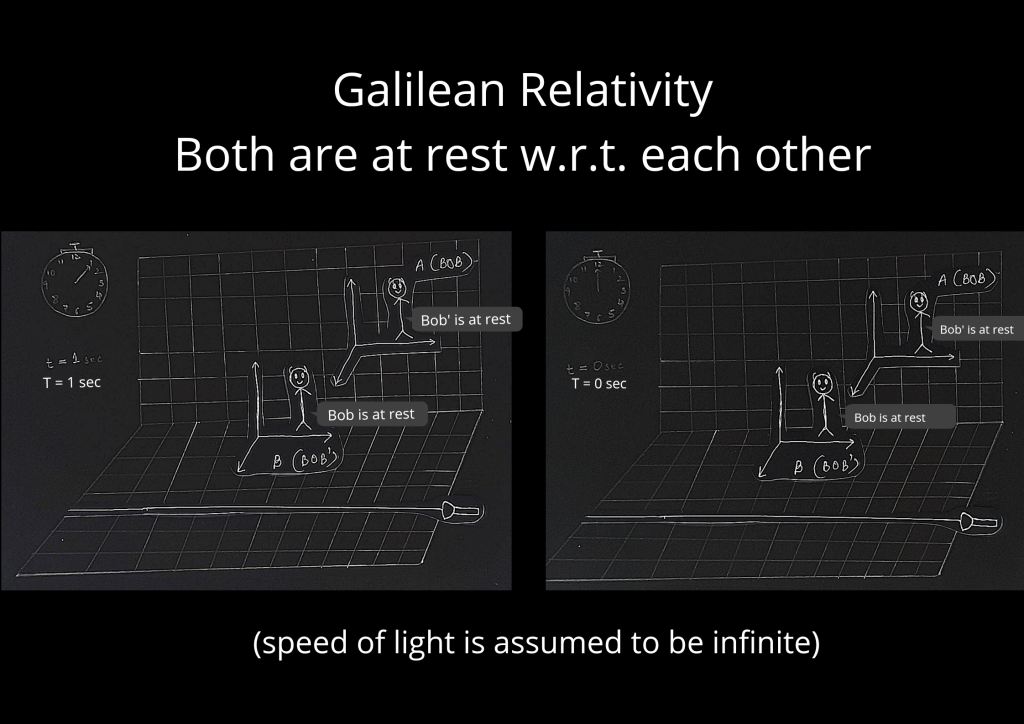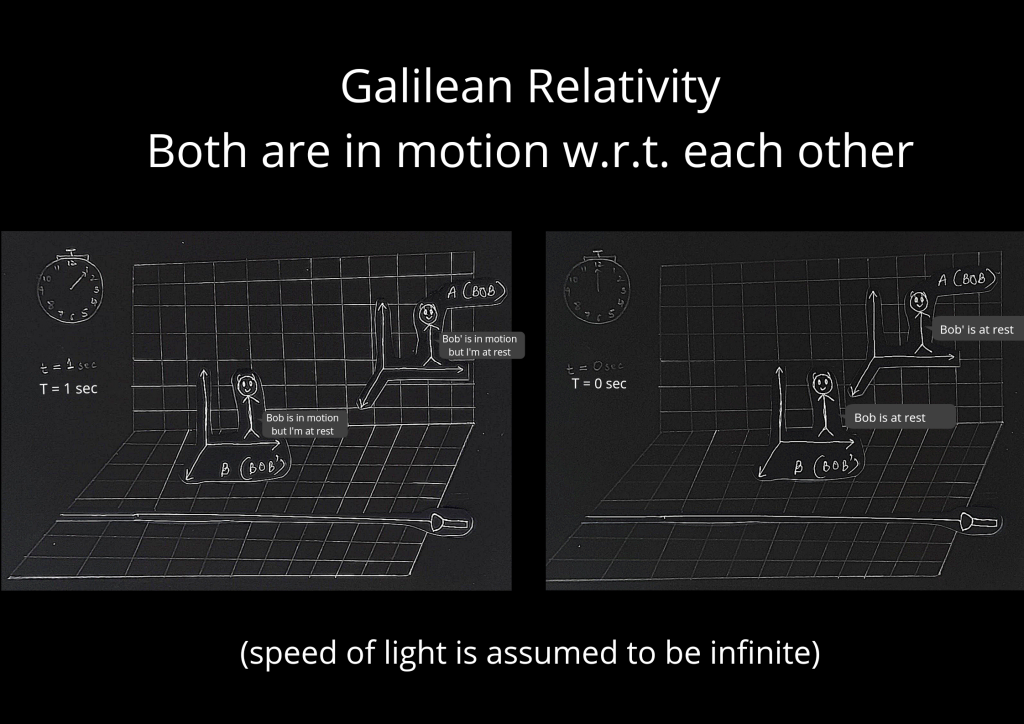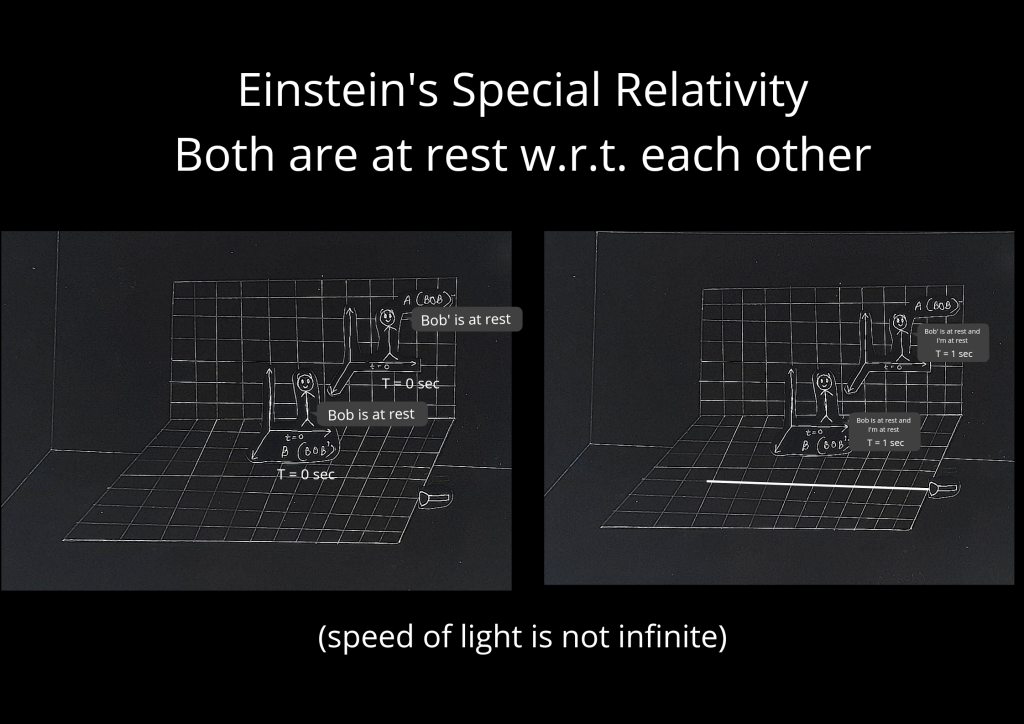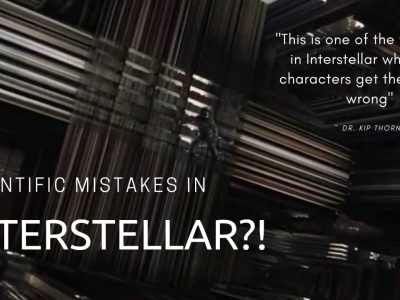
I’ll try to convince you that special relativity is fairly intuitive…
Before reading the whole thing, I want you to do a little experiment. I’m guessing you are in a perfectly well-lit room, or rather since you are reading it on a screen your pupils might still be contracted so it’ll work. Make sure it’s nighttime and the widows or blinds are shut, we don’t want any light sources (dimmest place possible).
The minute you shut all the light sources off (even the device you’re reading this on), try to notice the difference between your eyes closed and open. Do it now.
Back? Good. Were you able to tell the difference between your eyes closed and open? I know I can’t and you wouldn’t have either if you did it right. This is one of the things I do every night. Isn’t it a surreal experience? Without the fact that you could feel your eyelids’ muscles contracting, there’s no other way you can tell if your eyes are closed or open and sometimes I even lose track of that. That’s what lack of any reference frame feels like.
When you don’t have anything to compare it to, you can’t measure or perceive it, and when you can’t perceive it, it’s simply not there. It’s a very vague, abstract but equally interesting idea to wrap your heads around. Before going ahead it’ll be helpful if you could read my last blog which you can access here: MASS: An Answer to What is this?
What is stuff?
Think for a moment, use all your visualising skills. What is stuff? Something that has mass. Okay. But mass is nothing but confined energy (as discussed in the above blog). Okay. So to generalise, ‘stuff’ is anything that is confined as in occupies space.
How do you know it’s occupying space? You measure it, you measure its dimensions. How do you measure it? By some scale. What is a scale? A set of equally spaced lines drawn on a piece of wood, we compare these equally spaced lines to the dimensions of the ‘confined space’.
So you will agree that if we don’t have a scale (or no other instrument to measure) and the object is not self-emitting or there’s no source to illuminate it so that your brains have no way to compare any of its properties to a reference, it is simply not there? You will have to because that statement is 100 percent, scientifically true.
(Now some will say that we can touch and feel it…But that’s nothing but your nerves sensing the force of the walls of that confinement which in turn triggers your brain to compare it to the previously felt feeling of force. That is why I specifically said “so that your brains have no way to compare any of its properties”).
Reference frames:
This thought process leads us to a very important inference, you always need a reference to measure anything. When the reference is set to a value agreed upon by everyone, it can then be used to measure properties. This is where we land on our definition of a reference frame, it is a confined space where everyone agrees with whatever specific amount is taken to be a reference to measure.
Now keeping how you felt in the darkroom experiment mentioned at the start, try to imagine this. You are floating in free space holding an apple with nothing around, no object for comparison, no ‘Reference Frame’ exists, it’s just pure black, as black as it could be.
What will happen if you throw that apple? There’s no gravity (ignoring the gravitational field of yourself and the apple), there’s no floor, nowhere for it to ‘fall’ down to. The whole idea of up and down will make no sense, it shouldn’t, because ‘Up’ and ‘Down’are just words we use with respect to something.
You have no scale or clock to measure its speed or your speed. All you can tell is the apple is decreasing in size as some time passes. This ‘decrease in size’ is what we perceive as ‘Distance between two objects’ to increase in our day-to-day world. No one is there to tell you that which one of the two objects is moving.
You can’t see your size to be decreasing and the apple’s size is decreasing with time, you infer that the apple is moving. Don’t you think the apple will feel the same way? It will say that you are moving. There’s no deciding factor, nothing to tell who is right. This concept that Newtonian mechanics wasn’t able to solve.
Enter Einstein, he solves this ambiguity in a very subtle way by saying, ‘both of them are one hundred percent right’, and as always you can’t prove him wrong. You are at rest with respect to you and the apple is at rest with respect to itself and none of you can say the words “I’m not moving” because, with respect to each other, you are.
If you agree to this fact then by visualising a bit more you will also realise that the phrase “the apple is moving with the speed of 5 m/s” is incorrect. A correct version of that would be “the apple is looking smaller every second to me in a way that my mind can approximate it to be moving at a constant velocity of 5m/s relative to me, but I cannot be sure that this value is fixed for everyone else in the universe.”
And eventually, you will also have to agree to the fact that a body moving at a constant speed is fixed if and only if the person is in my ‘reference frame’. In fact, being at ‘rest’ and in ‘constant motion’ is only and only Relative.
Remember Bob? (a reference to the previous article) Taking Bob and his twin Bob’ as an example, if Bob and Bob’ agree that the apple is going 5m/s, they are in the same reference frame. If they don’t, then they are in different reference frames.
Sir Galileo Galilei proved that the universe is made up of these numerous reference frames. That every object ‘thing’ in this universe carries its reference frame with it. Reference frames can be the same or can be different, that depends on what speed the people in each reference frame agree on. You can only be at rest or in motion with respect to different reference frames.
For rigorous people, here’s the original statement, “Newton’s laws are invariant in every inertial frame of reference”.
For our purpose let’s leave the technicality aside and focus on the essence of the statement. If two people agree on some set of fundamental quantities to measure stuff, they can then use those comparisons to measure other physical properties precisely as well. Put in the factor of reference frames in and we have ourselves the ‘The Galilean Relativity.’ He said, Okay, so everything in the world is relative. All constant velocities are relative.
But fundamental properties of space and time, i.e. 3 dimensions of space and time are the same regardless of the reference frames. It’s like the space-time fabric is fixed like a stage and everyone is buzzing around on that fixed stage with different relative velocities, depending on their reference frames.
So Bob’s 1m and his twin’s 1m will match precisely and his 1 second will match Bob’s 1 second precisely, no matter what their relative speed is because the stage is fixed. It was believed that every point in this universe will agree that a 30 cm wooden scale kept at the centre of the universe is exactly 30 cm irrespective of their velocities.
It’s like the space-time fabric is fixed like a stage and everyone is buzzing around on that fixed stage with different relative velocities, depending on their reference frames. So far so good. This was experimentally verified on earth and was approved to be the law of all physics.
Everyone thought we understood all the mysteries because it was working with the experiments on earth so well. Then as the equipment got advanced and the experimentation got more sophisticated, surprise-surprise, the speed of light was measured, not as precise as today’s but everyone got startled by the fact that it is FINITE?!

Image Source: online.stanford.edu
Why was this such a huge deal and a question mark on the physics of the 1600s? Think about it. We had previously agreed that there’s no absolute velocity, there’s just relative velocity. We cannot set a velocity to something.
The fact that we could measure the speed of light, which is finite and nothing can go faster than light, meant that we could know someone’s absolute velocity, rest and motion will have a meaning and the term ‘frame of reference’, which stood out to be one of the important features of Newtonian physics, will lose its meaning.
Let me explain it in a better way taking the help of some images. Consider Figures 1 and 2. They show the notion of Galilean Relativity: In Fig 1. Two frames A and B are at rest as time passes and in Fig 2, the two frames are in motion with respect to each other, and light’s speed is considered to be infinite.
(This assumption is expected to be wrong because an infinite speed would rip the space-time fabric, but they did assume that the speed is much much greater than what’s calculated today, so much so that it became important for the light to be kept as a part of the stage itself and not something that could move around on that stage.)
This notion worked until they discovered the speed of light to be 3 hundred million meters per second. After that, the whole understanding of the universe was in question. Enter Einstein, he explains everything very gracefully by saying “Nothing can go faster than light and everyone in every reference frame will measure the speed of light to be exactly 299,792,458 m/s, no matter what”.
And this should make sense right because we earlier proved that no one should know their absolute speed, that it has no meaning but if we set the speed of light to be finite while keeping all the other postulates the same, i.e. space and time to be absolute then you will also know your absolute speed, which is forbidden to happen.
We had to change our underlying assumption of absolute space and time. It did mean that we needed a whole other set of mechanics for physics to work. We needed to change the ticking of time for every reference frame in a way that every reference frame will measure the speed of light to be exactly the same.
A lot of physicists were against this idea but Einstein worked out the math and theoretically proved this to be right. And again to this day, we cannot prove him wrong. As we are advancing our experimentation, each of Einstein’s theories is eventually being tested to be true. The flow of time is different in different reference frames. He quoted “space-time is not a stage, it is, in fact, one of the participants of the play”.
Yes, he said the space-time fabric itself is one of the things that buzz around on an even bigger stage. That space and time are not absolute, it should and does change. Einstein indeed proved the phrase ‘In science, the easiest explanation is most probably the best explanation’ true.
Newtonian mechanics is biased towards approaching reality quite humanly. That’s why the Special theory of relativity is so neat because it’s purely based on facts and experimentation and is the most unbiased way to approach reality
Author
















